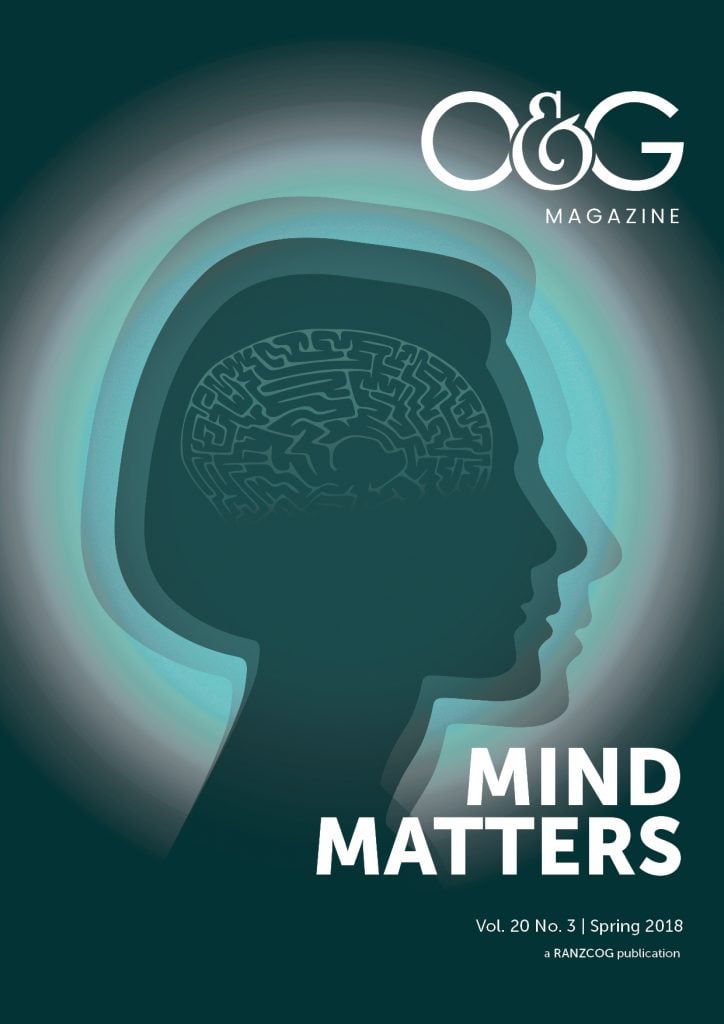Infanticide – the killing of an infant under the age of 12 months (or two years in Victoria) by the biological mother – is rare. Australia currently ranks as the ninth lowest worldwide for child homicides (0.8/100,000).1 However, it is sobering to remind ourselves that infancy is still the age at which there is the highest risk of being murdered. Ten per cent of filicides occur in the first week of life and 30 per cent in the first year, mostly by women. After the age of one, men and women are both represented, as are step-parents.2
Culturally, there is repugnance for child murders, yet male or female family perpetrators are rarely ‘pure evil’ (psychopathic). Issues that lead to the tragedy include mental illness, drugs, history of abuse and high levels of stress. For men, many have never learnt to deal with emotions, especially anger. The crimes can be particularly violent and imply belief of rights and ownership of the child and partner.
History
Filicide – the killing of a child under 18 years of age by a parent – is a definition that has no legal validity. Infanticide on the other hand, where included in the law and when invoked, has specific legal ramifications, as well as being suggestive of being based in science: the balance of mind is seen to have been affected by the act of giving birth or lactation. The maximum sentence for infanticide is reduced as in manslaughter (five years). It is an offence and a defence that can only be used by the biological mother.
There is little evidence, however, for postpartum mental illness being biological, except postpartum psychosis. The origin of the law and postpartum depression and anxiety both have a strong psychosocial basis. In the 19th century, working class women pregnant out of wedlock had no financial options to raise a child, and if without family support, babies were left; the Infanticide Act in the UK of 1922 prevented these women from being hanged. Many countries, notably not the US, adopted this Act. The 15 per cent of women who have perinatal mental illness3 have a higher rate of past and family psychiatric history (suggesting a genetic component). They also have lower levels of support and higher levels of stress.4 Overlapping with this group are families where abuse is prevalent (more than 350,000 notifications and more than 60,000 substantiated claims each year),5 but in only a small number of cases does the child die.
Australian states do not all recognise the infanticide law, and even when they do, it is not always used. Until recently, the state of Victoria generally put these women on bail and gave them community treatment orders, while jail time has been common in NSW. In a recent Victorian case, the woman was given a 20-year sentence. Although she killed an infant, her older children also died and she was convicted of murder. It is curious that her state of mind was seen to be affected in one case, but not the others, even though the act was simultaneous.
Classification
For the purposes of making sense of infanticide, it is important to separate a subvariety, neonaticide (the killing of an infant under the age of 24 hours), almost always perpetrated by the mother.6 Neonaticide differs from infanticide, demonstrating a strong association with denial of pregnancy. These women are often young (or at least naive and immature), have had limited sex education, and often rigid and/or religious upbringings. They may have complete or partial lack of knowledge of their state, may continue to spot or have periods, and deny it to family. For these young women, labour is sudden, dramatic and terrifying. The baby is unplanned and not wanted, an ‘alien’ who has torn through their body. The infants are often left or occasionally bashed brutally.7 In the six cases I have been involved with, three survived. One infant went home with the mother. Providing the case comes to light, these women are unlikely to be a risk to anyone else, although occasionally, they do have further pregnancies they deny.8
Characteristics
Xinran9 writes about the horrific impact of disposal of unwanted female babies in China, a primarily socio-cultural phenomena echoed in India. In Australia, the same cultural issues are not in play, but the neonaticide cases are generally unwanted psychologically and within the social context of their families.
Uniting characteristics beyond the neonaticide group are hard to establish. Studies are retrospective and often have small numbers. The strongest links are with a history of psychosis, suicidality and use of psychiatric services. Other common factors identified were isolation, domestic violence, history of abuse and maternal abandonment, unmarried status and drug abuse.10
The women I see, mostly, rather than being ‘bad’ (psychopathic) or ‘mad’ (psychotic), have done a bad thing. In a case I was involved in recently, both the prosecution psychiatrist and I agreed (as did many people who knew her) that the woman loved her child. How then can one make sense of such a murder unless it is madness? Does the psychiatric diagnosis fit the legal need for her, at the time of the offence, to not know what she was doing? To not know killing your child was against the law?
Association with mental illness
In Resnick’s study11 of the diagnoses of men and women who commit filicide, while nearly half had a diagnosis of severe mental illness (psychosis and severe depression), the remainder did not. Drug use, personality disorders, disordered relationships, family and poverty make up the ‘reason’ for the tragedy occurring, and the perpetrators were charged with murder. The research, however, included cases going back to the 1800s with very different social circumstances at play and his classification is unhelpful for infanticide, which involved only women. More useful is Meyer and Oberman’s12Meyer C, Oberman M. Mothers who kill their children: inside the minds of moms from Susan Smith to the ‘Prom Mom’. 2001. New York, NY: New York University Press./note] classification of maternal filicide:
- Neonaticide with potential denial of pregnancy and dissociation at birth
- Women who kill in conjunction with their violent or abusive partners
- Neglect secondary to distraction or preoccupation (which could be psychotic)
- Secondary to child abuse
- Purposeful, which could be related to mental illness.
Of the 14 cases I have dealt with, six were neonaticides (or attempted). Four were infanticides only; one psychosis, two abuse and domestic violence-related, and one complex mental health with cultural and isolation issues. One case was an infanticide-murder (of an older child) suicide, which was almost certainly psychosis. Three cases were infanticide-murder (older children), of which one was psychotic and the other three complex cultural and personality issues.
Outcomes, prevention and intervention
Sex education and readily available contraception are probably the key strategies to prevent neonaticides. However, these tragedies, like the broader group of infanticides, need better community awareness of the psychological costs and risks of motherhood, and the importance of family and community support. Beyondblue has achieved a significant change in community awareness and in routine screening for risk of depression, but after screening the intervention needs to be timely and include repeated assessments and respite, where needed. The woman I mentioned earlier who loved her baby had scored high on the Edinburgh Postnatal Depression Scale (EPDS), but was never followed up. While it was assumed that her circumstances (isolation) were the root cause of the score, the deeper psychological problems went undiagnosed and untreated. It is these problems we want to identify early and treat assertively. Parenting is not easy. Loneliness and isolation make parenting harder still.
References
- Damask A, Nelson M, Bonner B. Fatal child maltreatment and characteristics of deaths from physical abuse versus neglect. Child Abuse and Neglect 2013;37(10):735-744.
- West, S. An overview of filicide. Psychiatry (Edgmont). 2007 Feb; 4(2):48-57.
- Buist A, Austin M, Hayes B, et al. Postnatal mental health of women giving birth in Australia 2002-4: findings from the Beyondblue postnatal depression program. ANZJP 2008 Jan; 42(1):66-73.
- O’Hara M, Swain A. Rates and risk of postpartum depression – a meta-analysis. International Review of Psychiatry 1996;
8(1):37-54. - Australian Institute of Family Studies. Available from: https://aifs.gov.au/cfca/publications/child-abuse-neglect-statistics. Accessed May 12th 2018.
- Resnick P. Murder of the newborn: a psychiatric review of neonaticide. Am J Psych 1970;126(10):1414-20.
- Garner H. Punishing Karen. In: Everywhere I Look. Text Publishing 2016; pp121-125. ASIN B01B0SZACS.
- Spinelli M (ed). Infanticide: Psychosocial and Legal Perspectives on Mothers Who Kill. American Psychiatric Publishing 2002; ISBN-10 1585620971.
- Xinran. Messages from an unknown Chinese mother: stories of loss and love. Scribner. 2012; ISBN-10 1451610949.
- Freidman S, Horowitz S, Resnik P. Child murder by mothers: a critical analysis of current state of knowledge and a research agenda. Am J Psych 2005;162(9):1578-87.
- Resnick P. Child murder by parents: a psychiatric review of filicide. Am J Psych 1970;126:325-34.






Leave a Reply